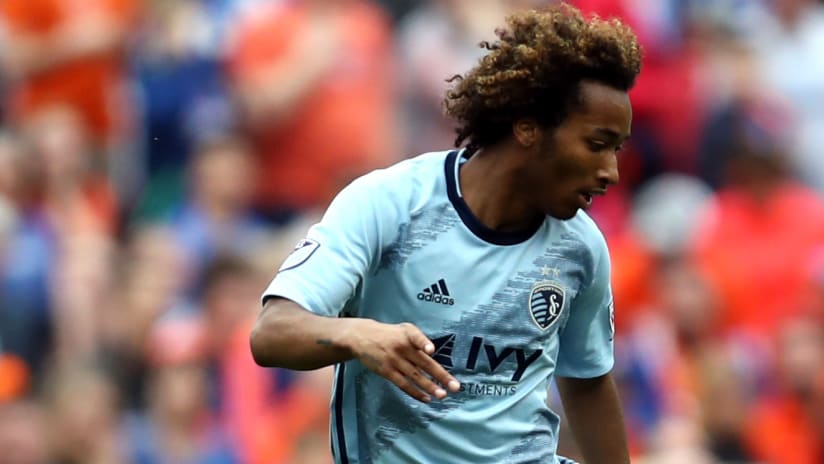NOTE: Every day this week, FC Cincinnati will take a deeper look at various academy programs across MLS that stand out for either their success in developing players for the first team – and international transfers – or for their methodology in training and/or integration into the first team. Today we start with Sporting Kansas City, before we take a deeper look at Philadelphia Union on Tuesday, Real Salt Lake on Wednesday and FC Dallas on Thursday.
“We think we can be one of the best in Concacaf at developing players. We really do.”
– SKC Academy Director Jon Parry
FC Cincinnati fans can be forgiven for forgetting the moment Gianluca Busio slotted the ball into FCC’s empty net back. But it’s a moment that represents what the club wants sees in its future.
When Busio scored in the 1-1 draw against Sporting Kansas City on April 7 at Nippert Stadium, it was his second goal in as many games and felt like a breakthrough moment for the 16-year-old midfielder.
Yes, he was only 16.
Busio finished the season with three goals – they came in consecutive games – and he’s now being linked to an Italian club for $3-4 million. Sporting want $10 million.
This isn’t a story about Busio. FCC will surely hear more about him in 2020.
Instead, this is a story about how Busio went from an academy product into an MLS first team so quickly.
While his age is remarkable, he’s not an outlier.
In 2019, Sporting KC had seven Homegrown Players on their roster. In the future, they want a starting XI exclusively comprised of Homegrown Players. (Note: that won’t happen anytime soon after the club just signed Alan Pulido for a reported $9.5 million from Chivas Guadalajara.)
Their long-time coach and sporting director Peter Vermes believes the academy is the pulse of the club. Considering it was named the 2018 MLS Academy of the Year, Sporting KC are in a healthy position.
So, how’d they get here?
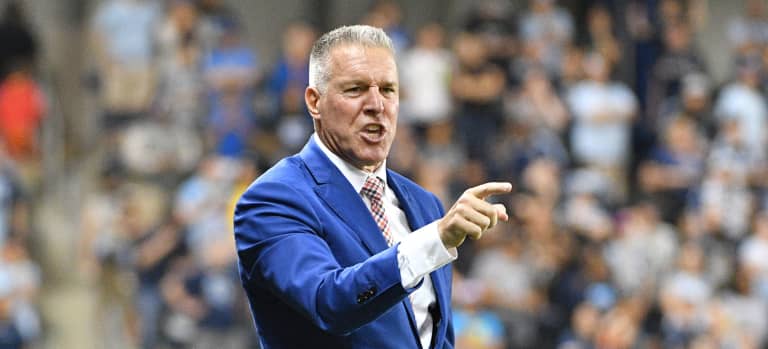
Peter Vermes. Photo via Denny Medley-USA Today Sports.
Foundation, belief and ambition
Any club believing in youth development will tell you the academy is the foundation of the entire team. With a good foundation, young, local players have a pathway into the first team and eventually can be sold for profit. Those funds can either be used to buy internationally renowned players like Pulido, reinvest in the academy or the club as a whole.
This is the approach GM Gerard Nijkamp wants FC Cincinnati to follow, and it’s one Kansas City are currently implementing.
But what’s most important isn’t just having good players coming through the pathway. It’s more important that ownership and the first-team coaching staff believe in player development and offer opportunities to younger players – as SKC did with Busio.
For Sporting KC, their academy-first approach means allocating significant resources to player development. On the sporting side, that includes a first team, SKC II (formerly Swope Park Rangers) in the USL Championship and seven youth teams. With the academy starting at the Under-12 age group, a player can theoretically rise through the academy, play in the USL Championship and eventually earn his MLS debut.
To facilitate this process, there are 20 full-time staffers handling the academy’s needs. The academy alone has two strength and conditioning coaches, a nutritionist, an academy scout and a director of player care.
“(Vermes) has been able to share his vision with the owners who see it,” said SKC Academy Director Jon Parry. “They’ve made a great investment into our staff and into our academy. We all believe the academy is the lifeblood of the club. We’re in a small market, but we’re not going to make excuses out of that. We’re not going to let that deter us from developing players.”
If anything, SKC have done the opposite.
Parry said he wore “50 hats” when he became the director 12 years ago. That included coaching three teams, scouting players and serving as the director of player care to find host families for players.
“For this thing to grow, I had to get off the field and stop coaching and be a real academy director,” Parry said. “I’ve been able to do that.”
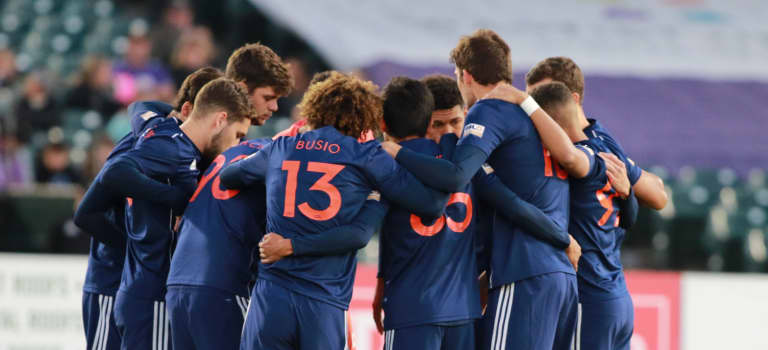
Sporting KC II. Photo via @SportingKC_II, Twitter.
How SKC found rapid growth (and success)
As the club built out its Academy infrastructure, the club created more assets. For example: technically every coach in the academy scouts local talent, but employing a full-time academy scout helps Sporting KC identify the country’s top youth players and recruit them into their academy.
Busio is an example. The club scouted the Greensboro, North Carolina native and signed him in 2016. It was a process similar to college recruiting, especially as that part of North Carolina is an open territory not currently assigned to any specific MLS team.
“What separates schools?” Parry asked. “Is it the education or the facilities? Is it the colors or what have you? I think that’s what’s happening with academies.”
Sporting Kansas City have a youth affiliate network that stretches into nine states, which broadens the opportunities to discover players. When the academy started, players usually lived within three hours of the club’s facilities. Now, their influence stretches far beyond that radius.
“In the last five years, we’re just getting a better-quality player that has the possibility to actually become a pro,” Parry said.
There are a few reasons for that.
At first glance, the impact of SKC II – which will enter their fifth season in 2020, following the rebrand – can’t be ignored. The USL Championship side provides a platform for players to transition from the academy, to SKC II and potentially the first team.
But essential aspects that have improved the organization’s player quality are the recently opened Center for Excellence and the club’s residency program.
What’s the Center of Excellence?
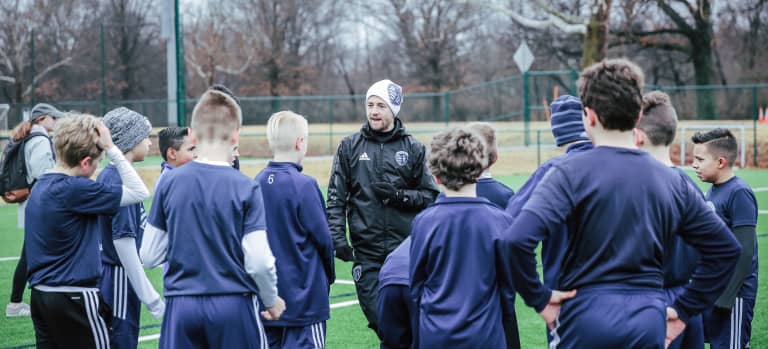
Photo via Sporting Kansas City.
The SKC Academy might start at Under-12, but Parry and the academy staff already have their eye on much younger players.
Similar to the FC Cincinnati Academy’s Discovery Program, Sporting can scout local talent who aren’t old enough to join the academy yet. The program offers an opportunity to see which kids might join the academy in the future, while also providing feedback to younger players to help their individual improvement. This also provides the opportunity to share methodology to younger players before they’re in the academy.
“We’re really trying to find the kids at 7, 8, 9 and 10 to come to our Center of Excellence and they can matriculate through our academy at U-12 and so on,” Parry said.
Parry said roughly 80% of the academy’s players were found in the Center of Excellence.
What’s the residency program?
Essentially: SKC find a young player they’d like to enroll in their academy, but he lives too far away to commute daily. The residency program means the team can explore the open market.
Players can live within the Kansas City community, where they’re housed, continue their education and play for the academy.
That’s where the director of player care, Betsy Maxfield, assists.
While she might help some first team players find a home or assist an international player with opening an American bank account, she also helps youth players find a good home where they’ll live while playing in the academy.
SKC find host families for players similar to an exchange student program a high school might apply for international students.
“What we’ve found is that a lot of the families that are looking to have an exchange student look at this and say, ‘Hey, this a pretty big deal and maybe we get to help a kid attain his goal of being a professional,’” Parry said.
Sporting used to bring high school sophomores and juniors into their residency program, but “that’s way too late now,” per Perry. “Last year we weren’t even looking at players over 2003. If they were an ’01 or ’02, they had to be able to go into the B team or the first time and train with them.”
The club works with local school systems to find host families, as well as find openings for academy players to become students. If an academy player joins SKC for next spring, the club has already made arrangements for a seamless transition. There used to be a waiting list previously, Parry said.
“Having a residency program was massive in regards to bringing in high-quality players,” Parry said. “We feel like having the host family is important because it’s important to get away, sit down and have a dinner with your family as well.”
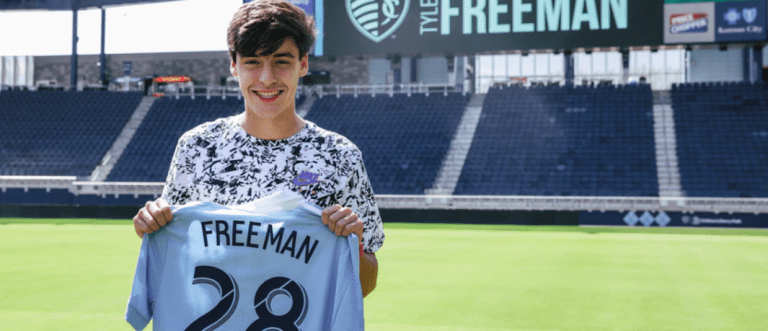
Photo via Sporting KC.
What comes next?
Parry said 90% of the Sporting KC Academy products won’t become professional players, so they work to help kids receive scholarships to the top college soccer programs around the country.
But by creating more competitive academy teams, that leads to faster development and more opportunities for players to graduate from the youth system, earn minutes on SKC II or maybe make the MLS roster.
Of course, SKC will need more Homegrown Players to field a full starting XI of them, but seven is already a considerable number.
As the 2020 season approaches, expect Busio’s role to increase for the club, while other former Academy players Cameron Duke, Jaylin Lindsay and Tyler Freeman could have breakthrough seasons.
Freeman’s only 16, but as FC Cincinnati supporters know, that’s old enough to make an impact.

